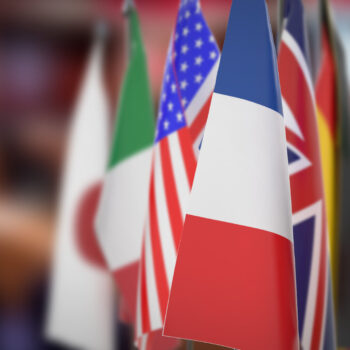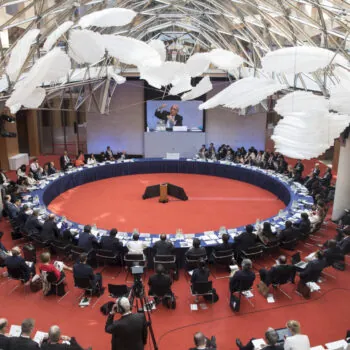Following a process of reflection on the lessons of the Copenhagen Climate Summit, Europe has begun to articulate elements of its forward strategy. At the Spring Council on 25-26 March European leaders adopted conclusions on climate change which broadly endorsed the strategy laid out in a Commission Communication of 9 March. One of the emerging themes is the need for more effective European climate diplomacy with third countries. This will be the subject of further discussion by European leaders in the second half of 2010.
In a new paper E3G argues that Europe should focus on building a winning coalition of partners for delivering a <2°C international climate regime in the next 2-5 years. This will require closer alignment of strategic objectives within and between European countries and stronger processes for understanding and influencing the positions of other countries. Better political strategy and understanding can form the basis for more robust EU policy positions within and beyond the UNFCCC negotiations, and for effective European programmes of cooperation with developing countries. In the face of deep budget cuts across Europe, delivering effective climate diplomacy will require imaginative institutional reform in Member States and smarter EU cooperation, including through the new European External Action Service (EAS). A summary of the paper is below.
Summary
- Despite negative public perceptions the EU was central to delivering the significant progress on action to control climate change in 2009. However, much more is needed to reach the 2°C goal. The pledges in the Copenhagen Accord imply perhaps $4 trillion in additional low carbon investment to 2030; but reaching a robust <2°C trajectory would require well over $10 trillion. More ambition could have been secured from the Copenhagen Summit with better management of the UN process and a stronger EU political strategy; but in the end ambition was mainly limited by fundamental political differences between major economies.
- Copenhagen showed the difficulties of securing positive international action in the new multi-polar geopolitical context, with its larger number of strategic actors and alliances. Using the Copenhagen deadline to drive progress through a multiplicity of international fora in 2009 raised the profile of climate change, but in retrospect often confused strategic relationships and contributed too little to the final outcome. The EU seems as well adapted as other major powers to navigate these new waters, but has to be more skilful in its climate diplomacy than the “low ambition coalition” in order to achieve its ambitious positive agenda.
- There are four main area of climate diplomacy which Europe must address: (1) strategy (how Europe defines its overall goals on climate change and integrates these goals with its wider strategic interests); (2) political engagement with third countries (how Europe understands and influences conversations on climate change in other parts of the world); (3) policy towards the international climate regime (how Europe builds effective mechanisms for international cooperation on climate change both within and beyond the UNFCCC); and (4) practical climate cooperation with third countries (how Europe organises itself to deliver practical support for low carbon, climate resilient development around the world).
- The EU must both work to implement the 3-4°C agreement embodied in the Copenhagen Accord and invest in building a winning coalition of partners for delivering a <2°C climate regime in the next 2-5 years. Any further delay puts the <2°C goal permanently out of reach. Europe is beginning to form its post-Copenhagen policy, with a strong emphasis on engaging third countries and taking a more “realist” approach to climate diplomacy. However, fundamental differences exist between and within European countries on key issues such as the move to a 30% EU emissions reduction target; the future of the Kyoto Protocol; the importance of a binding UN treaty; the right mix of conditionality and incentives; and the role – if any – of border adjustment measures.
- These policy differences stem from underlying divergences on strategic objectives and perceptions of international politics. Without new processes to deliver closer strategic alignment the EU will be unable to deploy the full weight of Community and Member State resources in support of its collective interests. Closer alignment rests on three critical pillars: improved collective political intelligence; a clearer medium-term strategy for meeting the <2°C goal; and stronger strategic conversations on climate change between senior European politicians and officials, including foreign ministries.
- Clearer political understanding will lead to more robust policy prioritisation. The EU must be able to answer the question of how its policy positions – for example on the future of the Kyoto Protocol—will help strengthen the progressive international coalition required for a <2°C agreement. A choice is needed between a “carrots and sticks” negotiating strategy or a softer approach of using conditional access to finance and other benefits to incentivise stronger action (“conditional bouquets”). Making the right choice requires better understanding of how other countries view EU positions; at present most developing countries view the EU as being too close to the US. In the absence of a robust medium-term strategy, Europe will be driven by short-term tactical decisions which do not maximise the EU’s influence.
- Reaching a <2°C agreement will require the US, China and other major countries to reassess their national interests on climate change. Firstly these countries must fully understand the risks to national security and prosperity posed by current trajectory towards a 4°C world. Secondly, they need to have confidence that shifting to a low carbon economy is both feasible and compatible with their wider development goals. Finally, they must believe that there are economic risks in failing to compete in the growing global low carbon economy. The EU should initiate stronger international discussions in all these areas, for example with security decision makers on the impacts of a 4°C world. The fast-start finance pledged at Copenhagen must be used to demonstrate the feasibility of transformational low carbon development models – not just incremental efficiency improvements – and to build the institutional capacity for scaling up climate finance beyond 2012.
- However, there is little point in having a sophisticated new strategy and aspirations for accelerating transformational investment without the means to deliver it. The EU has a reputation for promising much and delivering little on climate cooperation; this has damaged its political standing vis-à-vis the US and Japan. Implementing any new sectoral mechanisms will take at least three years of intensive engagement in key developing countries and serious investment in additional capacity in bilateral, EU and multilateral cooperation institutions. In the face of deep budget cuts across Europe, delivering increased impact will require imaginative institutional reform in Member States and smarter EU cooperation, including through the new European External Action Service (EAS).


